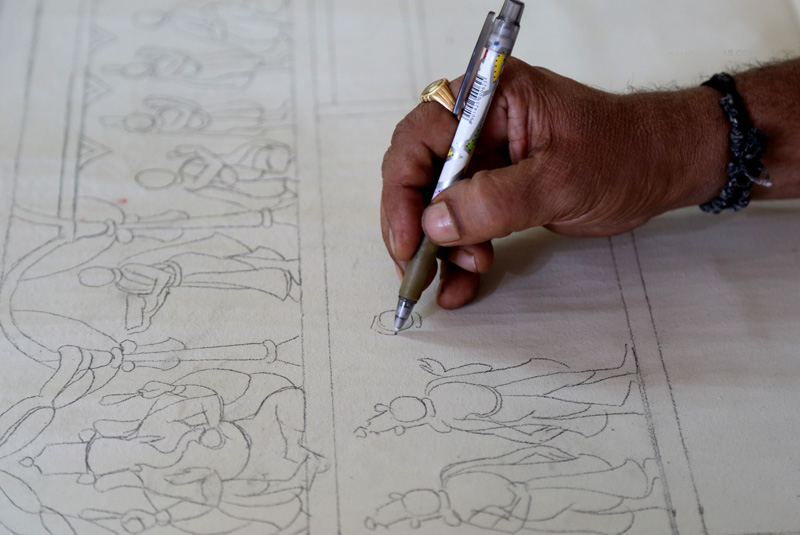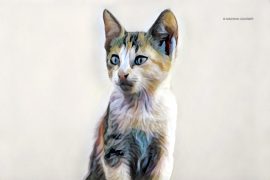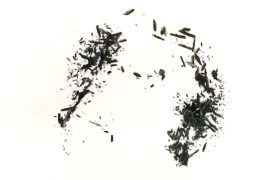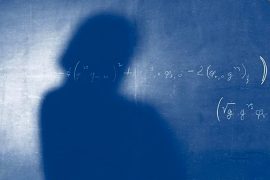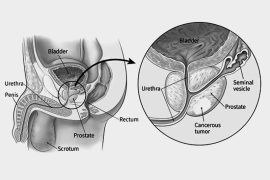In 2022, OpenAI – one of the world’s leading artificial intelligence research laboratories – released the text generator ChatGPT and the image generator DALL-E 2. While both programs represent monumental leaps in natural language processing and image generation, they’ve also been met with apprehension.
Some critics have eulogized the college essay, while others have even proclaimed the death of art.
But to what extent does this technology really interfere with creativity?
After all, for the technology to generate an image or essay, a human still has to describe the task to be completed. The better that description – the more accurate, the more detailed – the better the results.
After a result is generated, some further human tweaking and feedback may be needed – touching up the art, editing the text or asking the technology to create a new draft in response to revised specifications. Even the DALL-E 2 art piece that recently won first prize in the Colorado State Fair’s digital arts competition required a great deal of human “help” – approximately 80 hours’ worth of tweaking and refining the descriptive task needed to produce the desired result.
Today's moody #AIart style is…
🖤 deep blacks
↘️ angular light
🧼 clean lines
🌅 long shadowsMore in thread, full prompts in [ALT] text! pic.twitter.com/tUV0ZfQyYb
— Guy Parsons (@GuyP) January 9, 2023
It could be argued that by being freed from the tedious execution of our ideas – by focusing on just having ideas and describing them well to a machine – people can let the technology do the dirty work and can spend more time inventing.
But in our work as philosophers at the Applied Ethics Center at University of Massachusetts Boston, we have written about the effects of AI on our everyday decision-making, the future of work and worker attitudes toward automation.
Leaving aside the very real ramifications of robots displacing artists who are already underpaid, we believe that AI art devalues the act of artistic creation for both the artist and the public.
Skill and practice become superfluous
In our view, the desire to close the gap between ideation and execution is a chimera: There’s no separating ideas and execution.
It is the work of making something real and working through its details that carries value, not simply that moment of imagining it. Artistic works are lauded not merely for the finished product, but for the struggle, the playful interaction and the skillful engagement with the artistic task, all of which carry the artist from the moment of inception to the end result.
The focus on the idea and the framing of the artistic task amounts to the fetishization of the creative moment.
Novelists write and rewrite the chapters of their manuscripts. Comedians “write on stage” in response to the laughs and groans of their audience. Musicians tweak their work in response to a discordant melody as they compose a piece.
#ChatGPT just produced the #top10 #dadjokes Pretty good if you ask me! #AI #jokes #funny #Web3 pic.twitter.com/qgQALTZmRL
— Dr. Shannon H. Doak (@DoakShannon) January 10, 2023
In fact, the process of execution is a gift, allowing artists to become fully immersed in a task and a practice. It allows them to enter what some psychologists call the “flow” state, where they are wholly attuned to something that they are doing, unaware of the passage of time and momentarily freed from the boredom or anxieties of everyday life.
This playful state is something that would be a shame to miss out on. Play tends to be understood as an autotelic activity – a term derived from the Greek words auto, meaning “self,” and telos meaning “goal” or “end.” As an autotelic activity, play is done for itself – it is self-contained and requires no external validation.
For the artist, the process of artistic creation is an integral part, maybe even the greatest part, of their vocation.
But there is no flow state, no playfulness, without engaging in skill and practice. And the point of ChatGPT and DALL-E is to make this stage superfluous.
A cheapened experience for the viewer
But what about the perspective of those experiencing the art? Does it really matter how the art is produced if the finished product elicits delight?
We think that it does matter, particularly because the process of creation adds to the value of art for the people experiencing it as much as it does for the artists themselves.
Part of the experience of art is knowing that human effort and labor has gone into the work. Flow states and playfulness notwithstanding, art is the result of skillful and rigorous expression of human capabilities.
Recall the famous scene from the 1997 film “Gattaca,” in which a pianist plays a haunting piece. At the conclusion of his performance, he throws his gloves into the admiring audience, which sees that the pianist has 12 fingers. They now understand that he was genetically engineered to play the transcendent piece they just heard – and that he could not play it with the 10 fingers of a mere mortal.
Does that realization retroactively change the experience of listening? Does it take away any of the awe?
As the philosopher Michael Sandel notes: Part of what gives art and athletic achievement its power is the process of witnessing natural gifts playing out. People enjoy and celebrate this talent because, in a fundamental way, it represents the paragon of human achievement – the amalgam of talent and work, human gifts and human sweat.
Is it all doom and gloom?
Might ChatGPT and DALL-E be worth keeping around?
Perhaps. These technologies could serve as catalysts for creativity. It’s possible that the link between ideation and execution can be sustained if these AI applications are simply viewed as mechanisms for creative imagining – what OpenAI calls “extending creativity.” They can generate stimuli that allow artists to engage in more imaginative thinking about their own process of conceiving an art piece.
Put differently, if ChatGPT and DALL-E are the end results of the artistic process, something meaningful will be lost. But if they are merely tools for fomenting creative thinking, this might be less of a concern.
For example, a game designer could ask DALL-E to provide some images about what a Renaissance town with a steampunk twist might look like. A writer might ask about descriptors that capture how a restrained, shy person expresses surprise. Both creators could then incorporate these suggestions into their work.
But in order for what they are doing to still count as art – in order for it to feel like art to the artists and to those taking in what they have made – the artists would still have to do the bulk of the artistic work themselves.
Art requires makers to keep making.
The warped incentives of the internet
Even if AI systems are used as catalysts for creative imaging, we believe that people should be skeptical of what these systems are drawing from. It’s important to pay close attention to the incentives that underpin and reward artistic creation, particularly online.
Consider the generation of AI art. These works draw on images and video that already exist online. But the AI is not sophisticated enough – nor is it incentivized – to consider whether works evoke a sense of wonder, sadness, anxiety and so on. They are not capable of factoring in aesthetic considerations of novelty and cross-cultural influence.
Rather, training ChatGPT and DALL-E on preexisting measurements of artistic success online will tend to replicate the dominant incentives of the internet’s largest platforms: grabbing and retaining attention for the sake of data collection and user engagement. The catalyst for creative imagining therefore can easily become subject to an addictiveness and attention-seeking imperative rather than more transcendent artistic values.
It’s possible that artificial intelligence is at a precipice, one that evokes a sense of “moral vertigo” – the uneasy dizziness people feel when scientific and technological developments outpace moral understanding. Such vertigo can lead to apathy and detachment from creative expression.
If human labor is removed from the process, what value does creative expression hold? Or perhaps, having opened Pandora’s box, this is an indispensable opportunity for humanity to reassert the value of art – and to push back against a technology that may prevent many real human artists from thriving.
This story first appeared in The Conversation.
-30-
Copyright©Madras Courier, All Rights Reserved. You may share using our article tools. Please don't cut articles from madrascourier.com and redistribute by email, post to the web, mobile phone or social media.Please send in your feed back and comments to [email protected]

